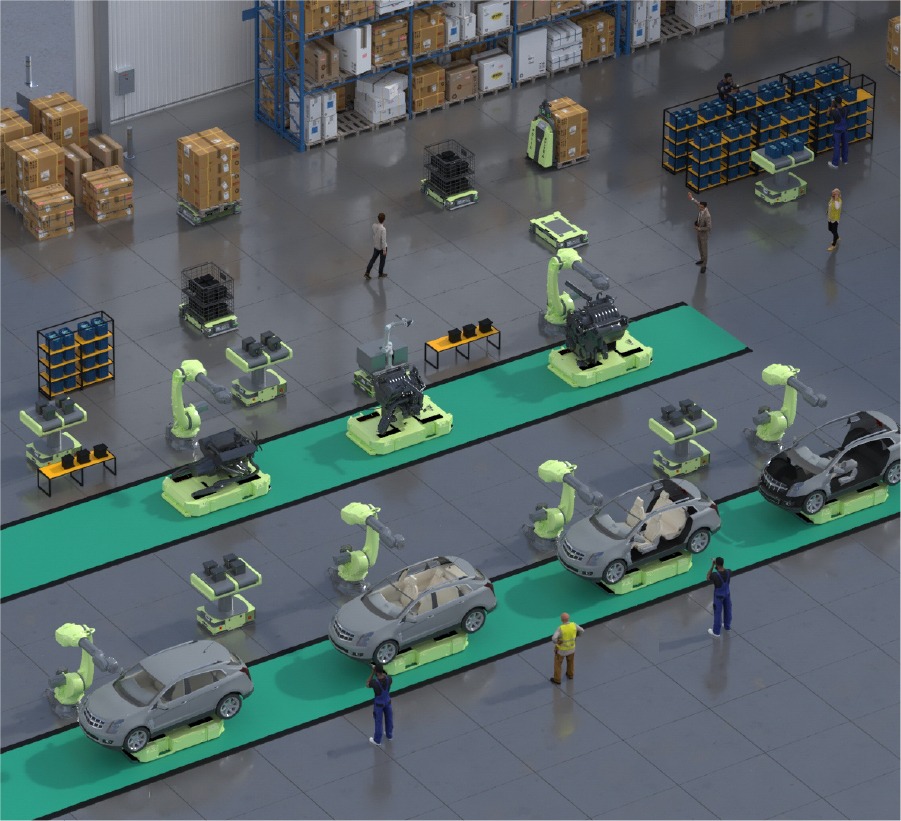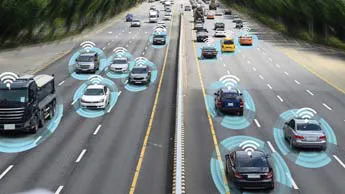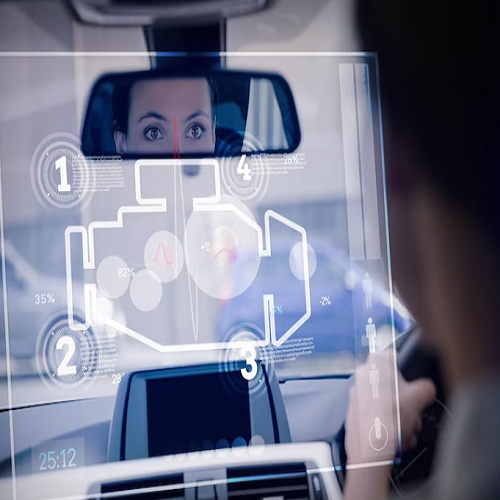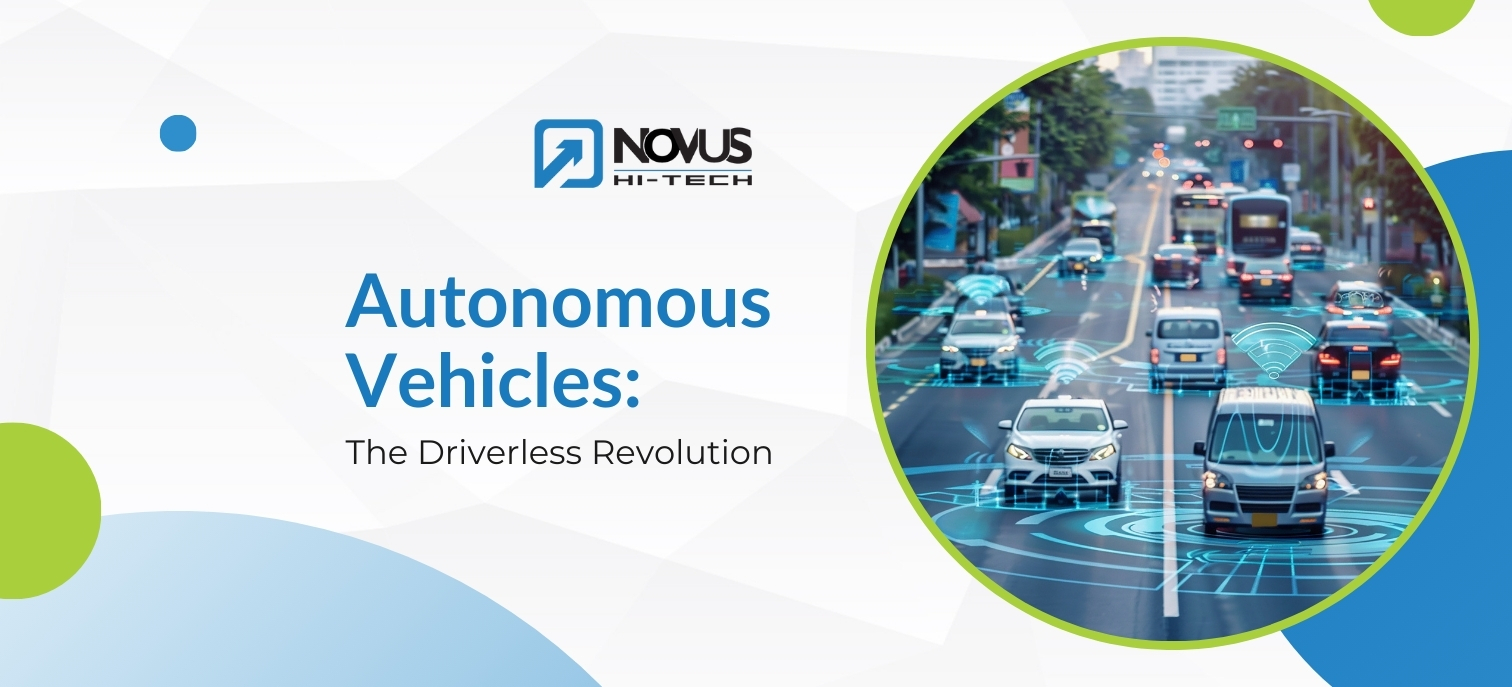Have you ever wondered what the future of transportation looks like? Imagine a world where cars drive themselves, traffic accidents are a rarity, and transportation is accessible to everyone, regardless of their ability to drive. This is the vision that autonomous vehicles (AVs) promise to bring to life.
Autonomous vehicles, also known as self-driving cars, are rapidly evolving technologies that have the potential to revolutionize how we move from place to place. AVs are equipped with advanced sensors, cameras, and artificial intelligence (AI) systems that enable them to navigate and operate without human intervention. The development of these vehicles is progressing at a remarkable pace, with numerous companies and researchers around the world working to bring fully autonomous vehicles to market.
The levels of autonomy in vehicles range from basic driver-assistance systems to fully self-driving cars. The Society of Automotive Engineers (SAE) defines six levels of vehicle automation, from Level 0 (no automation) to Level 5 (full automation). At Level 1, vehicles have features like adaptive cruise control, while Level 2 includes systems like Tesla’s Autopilot, which can handle steering and acceleration but still requires human supervision. Levels 3 to 5 represent increasing degrees of automation, with Level 5 being a vehicle that can drive itself under all conditions without any human input.
The potential benefits of autonomous vehicles are vast. They can significantly enhance road safety by reducing human errors, which are a major cause of accidents. AVs can also improve traffic efficiency by optimizing driving patterns and reducing congestion. Moreover, they offer increased mobility and independence for individuals who cannot drive, such as the elderly and disabled.
This blog aims to provide valuable insights for tech enthusiasts, urban planners, potential AV users, and investors interested in the future of transportation and the transformative impact of autonomous vehicles.
Understanding Autonomous Vehicles: From Concept to Reality
Autonomous vehicles (AVs) are vehicles equipped with advanced technologies that allow them to navigate and operate without human intervention. Unlike traditional vehicles, which rely entirely on human drivers, AVs leverage a combination of sensors, cameras, radar, and artificial intelligence (AI) to perceive their environment, make decisions, and control vehicle movement. This distinction is critical, as even modern vehicles with driver-assistance features like adaptive cruise control or lane-keeping assist still require significant human oversight and control.
History and Evolution of Autonomous Vehicle Technology
The concept of autonomous vehicles has been around for decades, with significant milestones marking its progress. Early research in AV technology began in the 1980s with projects like the DARPA-funded Autonomous Land Vehicle (ALV) and Carnegie Mellon University‘s Navlab. These early efforts laid the groundwork for future advancements, focusing on basic navigation and obstacle avoidance.
Advancements in Sensors and Technology
A key enabler of modern AVs is the advancement in sensor technology. LiDAR (Light Detection and Ranging) systems use laser beams to create detailed 3D maps of the vehicle’s surroundings, crucial for identifying objects and their distances. Radar complements this by detecting objects and their speed, even in poor visibility conditions like fog or rain. Cameras provide high-resolution imagery for detecting lane markings, traffic signs, and other vehicles. Together, these sensors create a comprehensive understanding of the vehicle’s environment.
Artificial Intelligence and Decision-Making
Artificial intelligence plays a pivotal role in autonomous driving. AI algorithms process the vast amounts of data generated by sensors to identify objects, predict their movements, and make real-time driving decisions. Machine learning techniques, especially deep learning, have been instrumental in training AV systems to recognize complex patterns and react appropriately to dynamic driving scenarios.
The Different Levels of Autonomy
The Society of Automotive Engineers (SAE) International has defined a six-level classification system for vehicle automation:
- Level 0 (No Automation): The driver controls everything, with no automated assistance.
- Level 1 (Driver Assistance): Basic assist features like adaptive cruise control or lane-keeping assist are present.
- Level 2 (Partial Automation): Vehicles can control steering and acceleration but require constant driver supervision.
- Level 3 (Conditional Automation): The vehicle can handle most driving tasks, but the driver must be ready to take over when prompted.
- Level 4 (High Automation): Vehicles can perform all driving tasks in specific conditions without human intervention.
- Level 5 (Full Automation): Vehicles are fully autonomous and can operate without any human input in all conditions.
Understanding these levels helps clarify the incremental advancements toward fully autonomous vehicles and underscores the complex interplay of technology and AI required to achieve this vision.
How Autonomous Vehicles Work: A Deep Dive
Autonomous vehicles (AVs) rely on an intricate combination of technologies to navigate and operate without human intervention. To fully understand how AVs function, it is essential to delve into the core components that enable their operation: perception systems, localization and mapping, planning and decision making, and vehicle control.
Perception System
The perception system is the foundation of AV operation, responsible for understanding the vehicle’s surroundings. This system integrates data from various sensors:
- LiDAR (Light Detection and Ranging): LiDAR uses laser beams to measure distances and create precise, high-resolution 3D maps of the environment. It can detect objects, their shapes, and their distances from the vehicle.
- Cameras: Cameras capture visual information, helping the AV recognize lane markings, traffic signs, pedestrians, and other vehicles. They provide high-resolution imagery that complements LiDAR data.
- Radar: Radar systems use radio waves to detect objects and their velocities, even in challenging conditions like fog, rain, or darkness. Radar is particularly effective for detecting moving objects.
Together, these sensors create a comprehensive, real-time 3D map of the vehicle’s environment, allowing the AV to perceive and understand its surroundings accurately.
Localization and Mapping
Localization and mapping are crucial for precise navigation. AVs use a combination of GPS, sensors, and high-definition maps to determine their exact location:
- GPS (Global Positioning System): GPS provides basic location data, which is refined by sensor input for higher accuracy.
- Sensors: Inertial measurement units (IMUs), wheel encoders, and other onboard sensors help refine the vehicle’s position by measuring movement and orientation.
- High-Definition Maps: AVs rely on detailed maps that include information about road layouts, traffic signals, and other infrastructure. These maps are continuously updated to reflect real-world changes.
By integrating data from these sources, AVs can localize themselves with high precision, ensuring accurate navigation.
Planning and Decision Making
The planning and decision-making process is where AVs truly exhibit their intelligence. AI algorithms process sensor data to understand the environment and predict the behavior of other road users. These algorithms interpret traffic rules and plan safe and efficient routes:
- Path Planning: AVs determine the best path to follow, considering factors like road conditions, traffic, and potential obstacles.
- Behavior Prediction: The system predicts the movements of pedestrians, cyclists, and other vehicles to anticipate and react to their actions.
- Decision Making: Based on predictions and traffic rules, AVs make real-time decisions such as when to change lanes, stop, or accelerate.
Vehicle Control
Vehicle control translates decisions into physical actions, controlling the vehicle’s movement through steering, acceleration, and braking systems:
- Steering: AVs use electric power steering systems to precisely control the direction of the vehicle.
- Acceleration and Braking: The throttle and braking systems are managed electronically to ensure smooth and responsive control.
By integrating perception, localization, planning, and control, autonomous vehicles can navigate complex environments, making real-time decisions to ensure safe and efficient travel. This intricate dance of technology showcases the incredible potential of AVs to transform the future of transportation.
The Benefits of Autonomous Vehicles: A Brighter Future for Transportation?
The widespread adoption of autonomous vehicles (AVs) promises a transformative impact on various aspects of transportation. By leveraging advanced technology, AVs offer several compelling benefits that could lead to a safer, more efficient, and inclusive transportation system.
Improved Road Safety
One of the most significant benefits of AVs is their potential to drastically improve road safety. Human error is a leading cause of traffic accidents, accounting for over 90% of crashes. Autonomous vehicles, equipped with advanced sensors and AI, can react faster than humans and make decisions based on comprehensive data analysis. They can detect and respond to hazards, maintain safe distances, and adhere to traffic rules consistently. This reduction in human error could lead to a significant decrease in accidents, injuries, and fatalities on the roads.
Increased Traffic Efficiency
Autonomous vehicles have the potential to optimize traffic flow, reducing congestion and travel times. By communicating with each other and infrastructure, AVs can coordinate their movements to avoid bottlenecks and reduce stop-and-go traffic. They can also optimize routes based on real-time traffic conditions, ensuring smoother journeys. This improved traffic efficiency not only saves time for commuters but also reduces fuel consumption and emissions, contributing to a more sustainable urban environment.
Enhanced Mobility for Everyone
AVs can revolutionize mobility for individuals who currently face challenges in accessing transportation. People with disabilities, the elderly, and those who cannot drive can benefit significantly from autonomous vehicles. AVs provide a reliable and independent mode of transportation, enhancing their quality of life and enabling greater participation in social and economic activities. The inclusive nature of AVs can lead to a more equitable transportation system, where mobility is accessible to all.
Reduced Environmental Impact
The integration of AVs with electric vehicles (EVs) has the potential to create a cleaner and more sustainable transportation ecosystem. AVs can be programmed to operate in the most energy-efficient manner, reducing fuel consumption and emissions. As electric AVs become more prevalent, the reliance on fossil fuels can decrease, leading to a reduction in greenhouse gas emissions and improved air quality. This shift towards greener transportation options aligns with global efforts to combat climate change and promote environmental sustainability.
Economic Opportunities
The advent of autonomous vehicles also brings economic opportunities. The development, manufacturing, and maintenance of AVs can create new jobs and stimulate economic growth. Additionally, the supporting infrastructure, such as advanced road systems and communication networks, requires skilled labor and investment. The AV industry can drive innovation and open up new markets, contributing to economic development and job creation.
In summary, the benefits of autonomous vehicles are multifaceted, offering a brighter future for transportation. From improved road safety and traffic efficiency to enhanced mobility and reduced environmental impact, AVs have the potential to revolutionize how we travel and interact with our environment.
Challenges and Considerations on the Road to Autonomy
While the promise of autonomous vehicles (AVs) is compelling, there are several challenges and uncertainties that must be addressed on the road to widespread adoption. These issues range from technological limitations and regulatory hurdles to public perception and ethical dilemmas.
Technological Limitations
One of the primary challenges for AVs is their performance in complex and unpredictable weather conditions. While AVs rely on advanced sensors like LiDAR, cameras, and radar, these systems can be compromised by adverse weather such as heavy rain, fog, snow, and ice. For instance, LiDAR and cameras can struggle with visibility in fog or heavy rain, while radar can have difficulty detecting objects covered in snow. These limitations necessitate further advancements in sensor technology and algorithms to ensure reliable performance across all weather conditions.
Regulation and Legal Issues
The development of regulations and legal frameworks for AVs is still in progress. Policymakers worldwide are grappling with how to safely integrate AVs into existing transportation systems. Key considerations include determining the legal liability in the event of an accident, establishing safety standards for AVs, and creating guidelines for testing and deployment. The lack of a uniform regulatory framework poses a significant hurdle for the industry, as differing laws across regions can complicate the deployment and scalability of AV technology. Collaborative efforts between governments, industry stakeholders, and regulatory bodies are essential to create a comprehensive and harmonized legal framework.
Public Perception and Safety Concerns
Public perception is another critical factor that can influence the adoption of AVs. Despite the potential safety benefits, many people are still wary of autonomous technology. Concerns about the safety and reliability of AVs, potential cyber threats, and the risk of job displacement for drivers contribute to public skepticism. Building trust in AV technology requires transparent communication about safety measures, rigorous testing, and demonstration of the technology’s reliability. Public education campaigns and pilot programs can help alleviate fears and build confidence in autonomous vehicles.
Ethical Dilemmas
Autonomous vehicles also raise ethical considerations, particularly in scenarios involving unavoidable accidents. For example, if an AV faces a situation where a collision is unavoidable, how should it prioritize the safety of different individuals involved? These ethical dilemmas involve complex decision-making algorithms that must weigh the potential outcomes and make split-second choices. Addressing these ethical issues requires collaboration between ethicists, engineers, and policymakers to develop guidelines that align with societal values and ethical standards.
In conclusion, while autonomous vehicles hold tremendous potential, addressing these challenges and considerations is crucial for their successful integration into our transportation systems. Technological advancements, regulatory clarity, public trust, and ethical frameworks are all essential components in navigating the road to autonomy.
The Future of Autonomous Vehicles: A Look Ahead
The future of autonomous vehicles (AVs) is poised to transform the landscape of transportation, with numerous advancements and integrations that promise to redefine how we travel. While the timeline for widespread adoption remains uncertain, industry experts and analysts provide valuable insights into the potential evolution of AVs and their impact on society.
Timeline for Widespread Adoption
Predictions for the widespread adoption of AVs vary, but many industry estimates suggest that fully autonomous vehicles could become common on public roads within the next decade. Companies like Waymo, Tesla, and Uber are making significant strides in AV technology, with pilot programs and limited deployments already in place. By the mid-2030s, it is anticipated that Level 4 and Level 5 autonomous vehicles could see more extensive use in urban areas, particularly in ride-hailing and public transportation services. However, full integration into everyday consumer use may take longer, as technological, regulatory, and societal barriers need to be overcome.
Integration with Smart Cities
The potential for AVs to operate seamlessly within smart city infrastructure is a key aspect of their future. Smart cities are designed with advanced connectivity, data analytics, and automated systems to enhance urban living. AVs can leverage this infrastructure to optimize routes, reduce congestion, and improve overall efficiency. For example, traffic signals and roadways equipped with sensors can communicate with AVs to provide real-time traffic updates and dynamic route adjustments. This integration can lead to safer, more efficient urban environments, where transportation is managed intelligently and cohesively.
The Rise of Ride-hailing and Mobility-as-a-Service (MaaS)
Autonomous vehicles are set to revolutionize the ride-hailing industry and promote Mobility-as-a-Service (MaaS) models. Companies like Uber and Lyft are investing heavily in AV technology to create fleets of self-driving cars that offer on-demand transportation services. MaaS envisions a shift from personal vehicle ownership to shared, subscription-based transportation services. AVs can make ride-hailing more efficient and cost-effective by eliminating the need for human drivers and optimizing fleet management. This shift can lead to reduced traffic congestion, lower emissions, and increased accessibility to transportation for all.
The Continued Evolution of AV Technology
The future of AVs will be driven by continuous advancements in AI, sensor technology, and computing power. AI algorithms will become more sophisticated, enabling better decision-making and situational awareness. Sensor technology, including LiDAR, radar, and cameras, will improve in accuracy and reliability, even in challenging conditions. Additionally, advancements in computing power will allow AVs to process vast amounts of data in real-time, enhancing their ability to navigate complex environments safely.
In summary, the future of autonomous vehicles is filled with exciting possibilities. While challenges remain, the ongoing development of AV technology, integration with smart city infrastructure, and the rise of MaaS models all point to a transformative shift in how we experience transportation. As these advancements continue to unfold, autonomous vehicles will play a crucial role in shaping a smarter, more efficient, and more connected future.
Conclusion
Autonomous vehicles (AVs) represent a groundbreaking advancement in transportation, with the potential to drastically improve road safety, traffic efficiency, mobility, and environmental sustainability. The technology behind AVs, encompassing sophisticated sensors, AI-driven decision-making, and precise control systems, showcases the remarkable progress made in recent years. However, the journey towards widespread adoption is not without its challenges. Technological limitations, regulatory hurdles, public perception, and ethical considerations remain significant obstacles that need to be addressed.
Despite these challenges, the continued evolution of AV technology and its integration with smart city infrastructure promise a future where transportation is safer, more efficient, and more accessible. The rise of ride-hailing and Mobility-as-a-Service (MaaS) models further highlights the transformative potential of AVs in reshaping urban mobility.
As AV development progresses, it is crucial for individuals, industry stakeholders, and policymakers to stay informed about the latest advancements and their societal implications. By staying engaged and knowledgeable, we can collectively navigate the road to autonomy, ensuring that the benefits of AV technology are realized while addressing the associated challenges.
In conclusion, autonomous vehicles are poised to revolutionize transportation, and their ongoing development is a testament to the potential for innovation to create a brighter future for all.





















